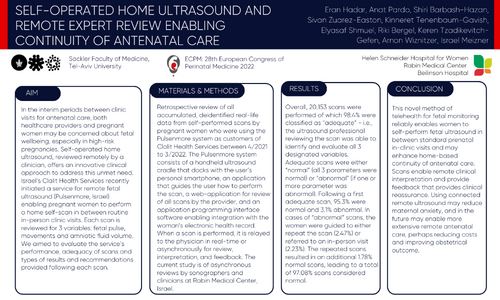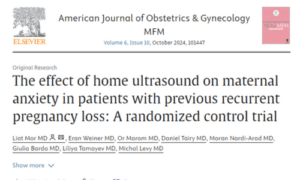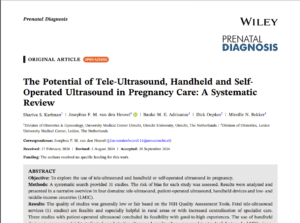Topic: Obstetrics
Keywords: Telehealth, Ultrasound, Screening, Obstetrics
Authors: Eran Hadar, Anat Pardo, Shiri Barbash-Hazan, Sivan Zuarez Easton, Kinneret Tenenbaum-Gavish, Elyasaf Shmuel, Riki Bergel,Keren Tzadikevitch-Gefen, Arnon Wiznitzer, Israel Meizner
Introduction:
In the interim periods between clinic visits for antenatal care, both healthcare providers and pregnant women may be concerned about fetal wellbeing, especially in high-risk pregnancies. Self-operated home ultrasound, reviewed remotely by a clinician, offers an innovative clinical approach to address this unmet need.
Israel’s Clalit Health Services recently initiated a service for remote fetal ultrasound (Pulsenmore, Israel) enabling pregnant women to perform a home self-scan in between routine in-person clinic visits. Each scan is reviewed for 3 variables: fetal pulse, movements and amniotic fluid volume.
We aimed to evaluate the service’s performance, adequacy of scans and types of results and recommendations provided following each scan.
Materials and Methods:
Retrospective review of all accumulated, deidentified real-life data from self-performed scans by pregnant women who were using the Pulsenmore system as customers of Clalit Health Services between 4/2021 to 3/2022.
The Pulsenmore system consists of a handheld ultrasound cradle that docks with the user’s personal smartphone, an application that guides the user how to perform the scan, a web-application for review of all scans by the provider, and an application programming interface software enabling integration with the woman’s electronic health record. When a scan is performed, it is relayed to the physician in real-time or asynchronously for review, interpretation, and feedback.
The current study is of asynchronous reviews by sonographers and clinicians at Rabin Medical Center, Israel.
Results:
Overall, 20,153 scans were performed of which 98.4% were classified as “adequate” – i.e., the ultrasound professional reviewing the scan was able to identify and evaluate all 3 designated variables. Adequate scans were either “normal” (all 3 parameters were normal) or “abnormal” (if one or more parameter was abnormal).
Following a first adequate scan, 95.3% were normal and 3.1% abnormal. In cases of “abnormal” scans, the women were guided to either repeat the scan (2.47%) or referred to an in-person visit (2.23%). The repeated scans resulted in an additional 1.78% normal scans, leading to a total of 97.08% scans considered normal.
Conclusions:
This novel method of telehealth for fetal monitoring reliably enables women to self-perform fetal ultrasound in between standard prenatal in-clinic visits and may enhance home-based continuity of antenatal care. Scans enable remote clinical interpretation and provide feedback that provides clinical reassurance. Using connected remote ultrasound may reduce maternal anxiety, and in the future may enable more extensive remote antenatal

Presented at: ECPM: 28th European Congress of Perinatal Medicine, Portugal, 2022






